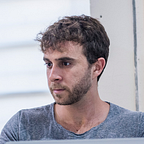The real challenge product designers are facing
When we think about talented product designers, we probably think about ones who produce the most quality design. We value quality design by judging if it solves the discussed problem in the best possible way, and if it is also delightful to use.
That would be, in an ideal world, where the design can be directly pushed to production pixel perfect, with zero bugs, correctly animated and without any interruptions.
But in the real world, there are often many barriers to overcome along the way, and a good designer is one who can help the team ship the best designed product, given these barriers.
A few examples for barriers:
- A junior developer takes too long to develop this new feature, or this feature cannot be developed in time for the next release. Still, the company’s marketing team has promised this release to the users.
- The company really wants to increase the sales, and the sales team is pushing the product team to add many ‘annoying’ marketing prompts in the product.
- A small portion of the beta users complain that the new animation is making them dizzy.
- The company released a new feature, but still hasn’t taken care of the onboarding process, so the users don’t know it exists.
- The CEO is actually a clown and he wants the analytics tool that was built for analysts and PMs to make funny sounds.
Each one of these examples, and basically every decision and person involved with the product, will have influence on the design decisions that will be made.
They will most likely be one of the two — either the designer will have to compromise on the original design, and change it according to the new limitation, or convince the relevant forces in the company that the original design would work better both for the users and the company.
Which brings me to my main point. The bigger challenge a designer will be facing is not necessarily solving the original problem using design skills. It’s more general than that. It’s being the person who cares the most about the product’s design, and keeps it in the highest quality standards while solving all of the interruptions that come in the way.
To get better at this job it’s required to have knowledge in different fields. A talented designer that helps good design ‘survive’ the interruptions needs to understand the product’s business side better, work well with developers, take part in the product management process, and most definitely be a good communicator. Skills which many designers (including me, I admit) are not working hard enough to achieve.
So when measuring a designer’s skill, they should be judged not only by their portfolio, but also by their personality, experience and intelligence. Because their real challenge would be to make sure the shipped product is well designed, even after all of the iterations, compromises and arguments that were held.
